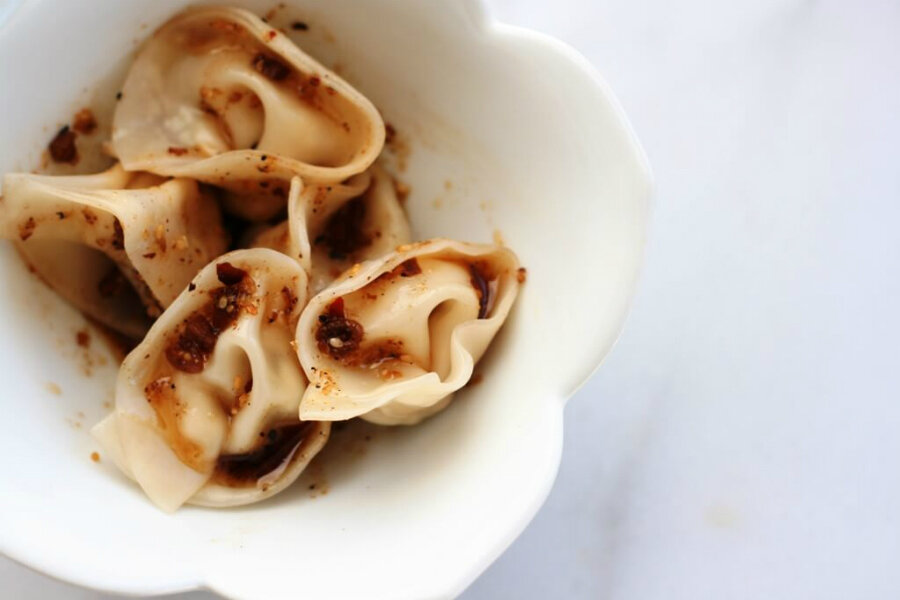How to host a dumpling party
Loading...
This year, Lunar New Year falls on February 8th. To welcome the Year of the Monkey, why not have a dumpling party?
If you’ve thrown a dinner party, you know how complex it can be to feed an eclectic mix of guests in this day and age of food allergies and opinionated gourmets. With vegans, gluten-snobs, and paleo-loving pals dotting the culinary landscape, how can one entertain without going crazy?
The good news is, when it comes to dumpling parties, it’s far from a faux-pas to ask guests to work for their food. That’s right, have your guests fold the dumplings they’ll be having for dinner. And tell everyone it’s proper etiquette to fold as many dumplings as they would like to eat.
That’s one hurdle overcome.
If you’re now thinking, but how am I going to come up with 101 different dumplings to cater to different palates and dietary needs? Well, you’re in luck. Leading up to the Lunar New Year, I’ll be dishing on a variety of dumplings that will make guests of every stripe happy!
In this first installment, I’d like to introduce you to a dumpling for your vegan friends. I present to you, Tofu, Spinach, and Fennel Wontons. Check back next week for a dumpling to delight fried food lovers everywhere.
Tofu, Spinach, and Fennel Wontons
If you can’t find extra firm tofu, you may substitute firm or medium but you may need more than the amount below because it loses more water when crumbled. And before you, or your guests, lament that you don’t like fennel’s licorice flavor, I assure you it dissipates to a whisper just by cooking it a little longer than the one minute specified. Taste as you cook and stop when you’re satisfied.
Makes: 24 wontons
Prep: 45 minutes
Cook: 16 minutes
For the filling:
4 ounces extra-firm tofu
2 tablespoons vegetable oil
1 teaspoon finely minced fresh ginger (1/2-inch piece)
1/2 cup finely chopped fennel bulb (2 ounces, about 1/2 small fennel bulb)
4 ounces (6 cups packed) baby spinach, coarsely chopped
1/8 teaspoons salt
Dash ground white pepper
1/4 teaspoon sugar
1 teaspoon soy sauce
1 teaspoon sesame oil
1 tablespoon chopped green onions, green parts only (1 stalk)
1/2 teaspoon chopped fennel fronds
24 round or square wonton wrappers (plus a few extra just in case!)
1. To make the filling, place the tofu in a non-terry kitchen towel and wring out as much liquid as possible. You will have about 2/3 cup crumbled tofu.
2. Heat the oil in a large wok or skillet over medium heat until shimmering hot. Add the ginger and stir for about 30 seconds, until aromatic. Add the fennel and stir and cook for about 1 minute until it turns translucent. Add the spinach and stir and cook for about 1 minute until it starts to wilt. Add the tofu, salt, pepper, sugar, soy sauce, and sesame oil and mix well until heated through. Taste and adjust seasonings if desired.
3. Turn off the heat and add the green onions and fennel fronds. Transfer to a bowl and set aside to cool completely before assembling the dumplings. You should have about 1-1/2 cups of filling. (The filling can be prepared 1 day in advance and refrigerated. Bring it to room temperature before assembling the dumplings.)
4. To assemble the wontons, set up a work station with a small bowl of water, a towel for wiping your fingers, the filling, a steamer tray(s) and/or a parchment-lined rimmed baking sheet for the finished wontons, and a stack of wrappers covered with a damp towel. (If you are making the wontons in advance, or freezing them, lightly dust the parchment paper-lined tray with flour to avoid sticking.)
5. To form a wonton, lay a wrapper flat on your left (or non-dominant) hand. Place a 1/2 tablespoon-sized amount of filling in the center of the wrapper, pressing and shaping it into a flat mound and keeping about 1/2 to 3/4 inch of wrapper clear on all sides.
6. Dip your fingertip from your other hand in a little water and gently moisten the edge of the wrapper. Wipe your finger dry.
7. Fold one side of the wrapper over the filling to form a half moon. Seal the edges, carefully pushing out the air from the wrapper. Holding the two sealed ends of the half moon (with the paunch facing your body) pretend they’re arms and bring them up overhead, overlapping the ends to meet in a “hug.” Moisten with a little water and pinch to seal. Place the finished dumpling on the baking sheet or steamer tray sealed-side up.
8. Repeat, placing the finished dumplings 1/2-inch apart and keep them covered with a dry kitchen towel as you work. If you don’t have enough space on your steamer trays to steam all the dumplings at once, or if you are not steaming them immediately, place the waiting ones on the prepared baking sheet.The assembled wontons can be covered with plastic wrap and refrigerated for several hours and cooked straight from the refrigerator. They can also be frozen (see notes below).
9. To cook, steam the wontons over boiling water for about 8 minutes, or until slightly puffed and translucent. Remove the trays from the heat first before removing the dumplings.
10. Toss the dumplings with the dipping sauce and serve immediately, either in a communal bowl with a spoon or portioned into individual bowls.
Notes:
To freeze, leave the wontons on the baking sheet and freeze until hard (about 1 hour), then transfer them to a zip-top freezer bag, pressing out excess air before sealing. Frozen dumplings will keep for 1 month. To cook, thaw completely on parchment-lined steamer trays, using your finger to smooth over any cracks before steaming.
For the sauce:
I’m assuming most people don’t have Chinkiang Chinese black vinegar in their pantries, but if I’m wrong, please use it in place of the rice vinegar and balsamic vingar.
Makes: 1/2 cup
Time: 15 minutes
2 to 4 whole hot Chinese dried red chilies (or arbol chilies), stems removed
1 teaspoon Sichuan peppercorns or flavorful peppercorns like Tellicherry black peppercorns
1 tablespoon sesame seeds
3 tablespoons vegetable oil
1 tablespoon toasted sesame oil
1 tablespoon rice vinegar
1 tablespoon balsamic vinegar
1 tablespoon soy sauce
2 teaspoons sugar
1 tablespoon minced garlic (about 3 medium cloves)
1. Toast the chilies, peppercorns, and sesame seeds in a dry skillet over medium heat until aromatic and lightly toasted, 3 to 4 minutes. Transfer to a mortar and pestle and grind until the chilies resemble store-bought crushed red pepper flakes, the peppercorns are a coarse powder, and most of the sesame seeds are crushed (leave about a quarter whole). Transfer to a heatproof bowl.
2. Heat the oil in a small skillet over medium heat until shimmering hot. Immediately pour the hot oil over the chili-peppercorn mixture. Watch out for the sizzle. Let cool for 5 minutes.
3. Stir together the sesame oil, vinegars, soy sauce, sugar, and garlic in a medium bowl until the sugar completely dissolves. Stir in the chili oil mixture and set aside until ready to use.
Note: Make the sauce ahead and refrigerate in a sealed container for up to 2 days.
Related post on Pickles and Tea: Fried pork wontons






